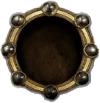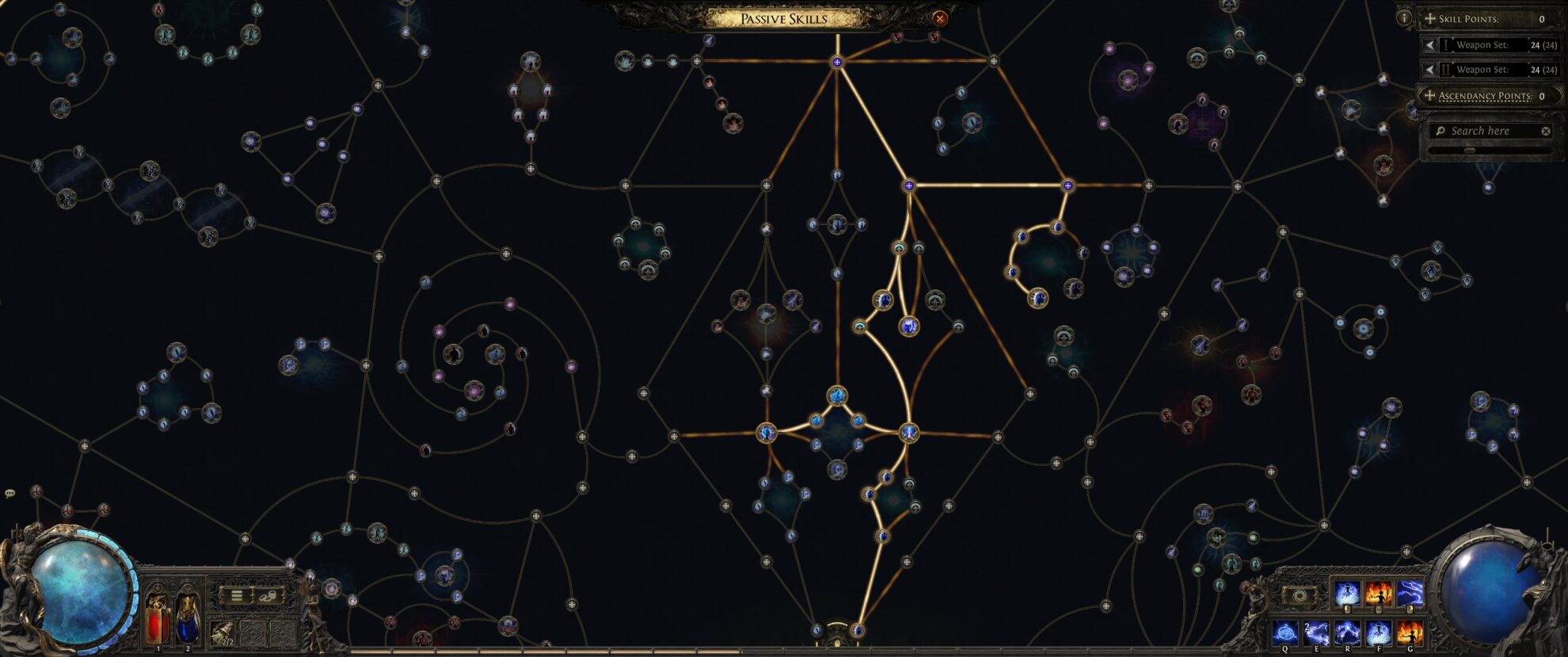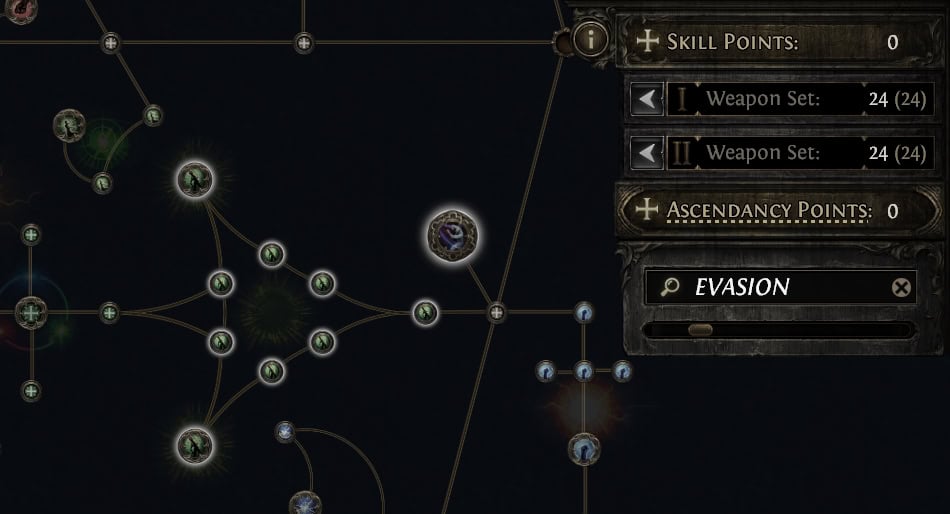Path of Exile 2’s Passive Tree can be complex and challenging for new players. In this guide, we will explain how it works and how to navigate and manage it more easily.
Table of contents
What is the Passive Tree
Like many RPGs, the main form of character progression in Path of Exile 2 is done by Leveling and assigning Points to the Passive Tree like the one below.

Unlike most RPGs or even ARPGs however, Path of Exile 2’s Passive Tree is more than just assigning and leveling skills. Instead, those are handled via the game’s Gemcutting System.
The Passive Tree for Path of Exile 2 is a broader, more open-ended experience that allows for a high degree of flexibility. This approach has its share of problems, more notably its size and complexity which can be overwhelming until you familiarize yourself with it.
Passive Tree Nodes
The Passive Tree contains four distinct “power levels” to its nodes: Attributes, Small Passive, Notable Passives and Jewel Sockets, and finally, Keystone Passives.

Attribute Nodes
Attribute Nodes nodes form what’s commonly referred to as the Attribute Highways, which create three distinct rings around the Passive Tree. These not only give us our necessary Attributes but allow us to quickly traverse between sections of the Passive Tree. As we move away from the center, these Attribute Highways become more cost-efficient per point to travel a larger portion of the Passive Tree.

Small Passives
Small Passives are the nodes that lead up to Notable Passive and help form Passive Clusters. These often grant bonuses in line with the Notable Passive they lead to, though in much smaller amounts.

Notable Passives
Notable Passives are the middling-sized passives, which house a lot of character power. A lot of Passive tree planning is focused on these nodes, taking ones that strengthen our build. In Path of Exile 1, taking one of these would also grant access to Mastery Nodes, but those aren’t in the current version of Path of Exile 2.

Jewel Sockets
Jewel Sockets are special nodes that allow us to socket a Jewel in them. We can think of Jewels as “Customizable Notable Passives”. They offer a lot of power, similar to that of Notable Passive, but also have a wide variety of stats available to them. This means getting a good Jewel can take a bit of effort, or trading, but well worth the investment. There are even Unique Jewels that add extra power and complexity to these sockets, but we won’t discuss those here.

Keystone Passives
Keystone Passives are the strongest Passives on the passive Tree, as shown by their larger size and limited quantity. Most builds will aim to use at least one of these, but these are also host to powerful effects that demand you build and gear around them to get the most out of them.
Starting Zone
At the core of the Passive Tree is the Starting Zone, which will eventually house our Ascendancy Class and Passives once we unlock those in the future. If you want more information on Ascendancy Classes, check out our Classes and Ascendancies Guide.
For now, let’s focus on that Starting Zone. One thing you’ll likely notice is that it branches off in 6 distinct directions.

Each of these supports two different Character Classes based on their general Attribute needs based on the weapons they most commonly use. This distribution looks a bit like this:
| Attributes | Direction | Classes |
|---|---|---|
| Intelligence and Dexterity | ↗ | Monk and Shadow* |
| Intelligence | ↑ | Sorceress and Witch |
| Intelligence and Strength | ↖ | Templar* and Druid* |
| Dexterity | ↘ | Ranger and Huntress |
| Dexterity and Strength | ↓ | Mercenary and Duelist* |
| Strength | ↙ | Warrior and Marauder* |
While classes all share a starting zone with at least one other class, this does not mean that the starting area of the tree is the same for each class. For example, the Sorceress has more bonuses geared for Elemental Damage, whereas the Witch instead has Chaos Damage and Minion Damage.
These starting positions put them closer to Passives for their default weapons and defenses they will often rely on. This helps greatly with the choice paralysis that many newer players will find themselves having to contend with.
Passive Points
Now that we’ve covered what the passive Tree is and how it’s laid out, let’s talk about the passive Points we’ll earn and how we can get the most out of them.
Earning Passive Points
One thing that Path of Exile 2’s Passive Tree does share with other RPGs is that its main form of progression comes from simply Leveling our character. Each Character Level will grant one Passive Point, but this isn’t the only way to gain Passive Points.
The only other way to gain Passive Points currently is by obtaining Books of Specialisation, which grant two Passive Points and two Weapon Set Passive Points. These are limited to quests and optional bosses, encouraging us to complete quests and explore the zones.
While there may be other potential means of gaining Passive Points in the future, it’s not likely that the maximum amount of points available will change any time too soon.
Spending and Refunding Passive Points
While spending the points themselves is fairly self-explanatory, we’ll quickly go over how to do so.
At a base level, we can select the nodes we wish to assign points to, up to the number of available Passive points we have. Then we can select Apply to confirm and apply the points to our character. With Mouse and Keyboard controls, we can hold Control to instantly confirm our choice when selecting Passives. Controllers don’t appear to have this option.
Once assigned the only way to undo these choices is with a small Gold cost from an NPC that we get access to about halfway through Act 1. This cost does increase slightly with Level, but by the endgame, Gold is hardly a concern
Weapon Set Passive Points
Weapon Set Passives are a new feature to Path of Exile 2 and almost require a guide to properly explain them and how best to use them. We’ll earn 24 of these points across the campaign from the Books of Specialisation mentioned earlier.
To keep it simple for this guide, however, the best way to explain it is that they allow us to more effectively split our Passive Points between our two weapon sets. While these aren’t entirely separate Passive Points, we can spend a single Passive Point differently for each of our Weapon Sets.
These allow us to have one Weapon Set set entirely focused on our Damage and DPS Skills, while our second set can focus on buffing us or debuffing enemies. It’s a bit confusing to get the hang of, but well worth the trouble to invest in learning to use them well.
These can be applied by selecting either Weapon Set in the upper right of the Passive Tree. After Selecting the weapon set you wish the passive point to be applied to, apply the points. Then at any point after, these points can also be assigned as we see fit by selecting the other Weapon Set and assigning them once again. Just keep in mind we can’t spend Weapon Set Passives in one set past what’s already assigned in the other Weapon Set without additional Points.
Tips for Using the Passive Tree
Now, here are some quick tips to help navigate the Passive Tree, and make it less intimidating and easier to use.
We mentioned it previously, but we’ll mention it again for good measure. On PC, by holding Control when assigning Passive Points, any Passive Point we spend will be instantly allocated without confirmation. This can speed up both assigning and refunding passives, making it a very useful shortcut.
If looking at the full tree is too intimidating or confusing, consider zooming in. We’ll often not be spending more than a handful of points connected to where we already are. So reducing the clutter can help make things more manageable and help us focus on the nodes nearest to us first.

The one time I do recommend being more zoomed out is to use the Search function. This search can help you more easily find nodes that boost the stats you want. In the case of the example below, showing how searching for evasion highlights nodes that will affect it.

Take note that while searching, it will show nodes that can affect the stat positively or negatively, such as the node Potent Incantation reducing Cast Speed but showing up when searching for “Cast Speed”. This can be mitigated by searching “Increased Cast Speed”, but will take longer to input.
Finally, as a general rule, it’s better to take Damage Nodes early on, where damage is harder to come by from items. Once we reach Act 3 and are working towards progressing further, then make the shift to getting some nearby defensive nodes.






